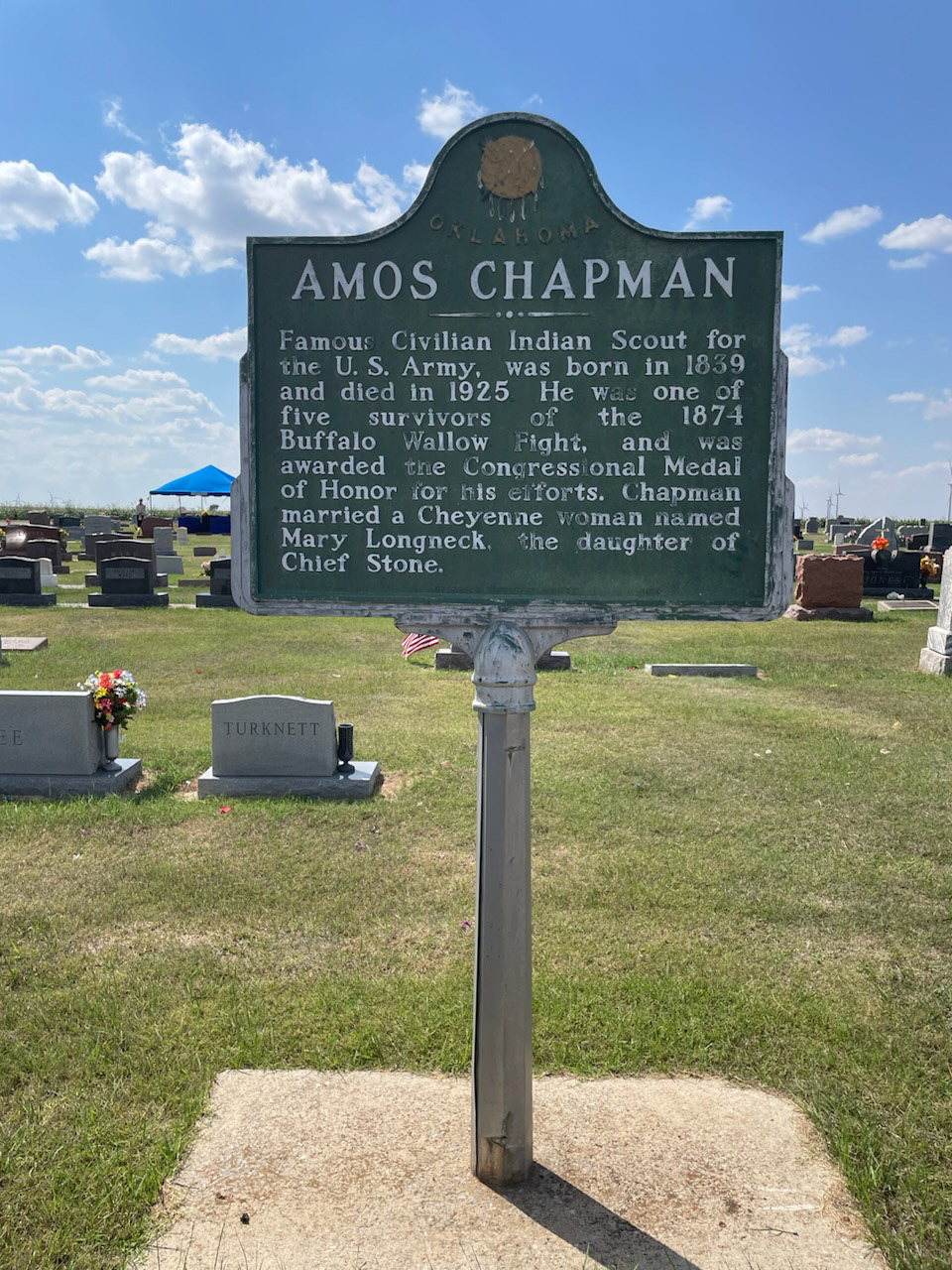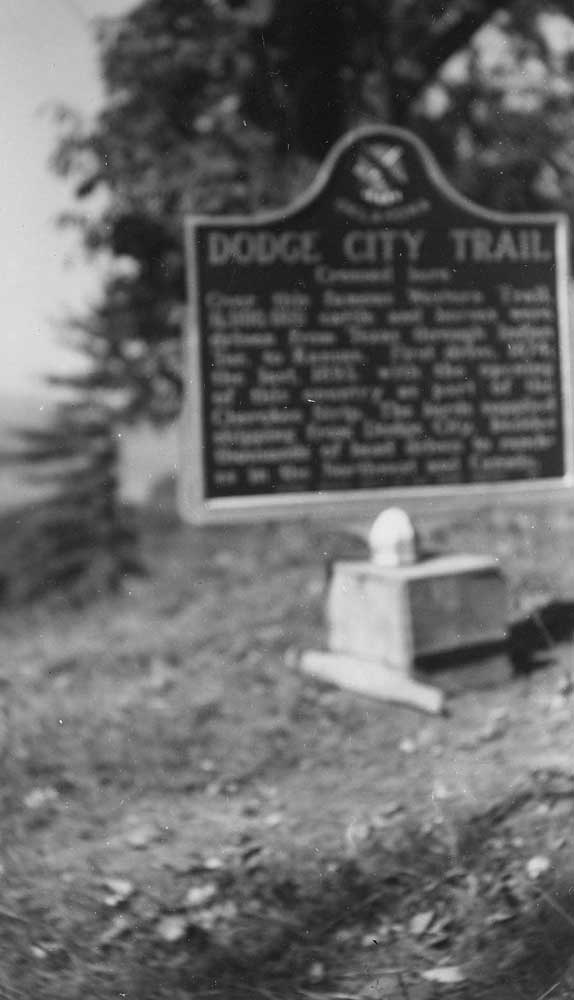
Historical Marker Program
Search Results
Your search returned 5 results.
Amos Chapman
Dewey CountyLocation: in Brumfield section of Seiling Cemetery
Coordinates: 36.160600, -98.938700
Material: Aluminum
Sponsor(s): Seiling Chamber of Commerce
Topics: American Indians; Government; Military; Territorial Period, 1861–1907; Transportation; Westward Expansion, 1803–1861
Amos Chapman was a famous civilian American Indian scout employed by the US Army. He was one of only five survivors of the Buffalo Wallow Fight in 1874, an action that earned him the Congressional Medal of Honor. Chapman later married Mary Longneck, the daughter of a Cheyenne chief.

California Road
Dewey CountyLocation: on OK-34, two miles north of Leedy
Part of the road west to California first used by gold seekers in 1849 can be seen at this site.
Carry A. Nation
Dewey CountyLocation: on US-183 south of intersection with US-60
Coordinates: 36.140223, -98.955791
Material: Aluminum
Sponsor(s): Oklahoma Historical Society
Topics: Family/Household; Settlement Patterns; Social/Cultural
Carry Nation and her husband David lived in a log cabin on this site after the opening of the Cheyenne-Arapaho lands in 1892. After moving to Medicine Lodge, Kansas, in 1899, Nation began her famous crusade against liquor, including using a hatchet to smash saloons.

Dodge City Trail
Dewey CountyLocation: on US-60, five miles west of Vici
Coordinates: Unknown
Material: Aluminum
Sponsor(s): Unknown
Topics: Ranching; Territorial Period, 1861–1907; Transportation
Millions of cattle and horses were driven from Texas through Indian Territory on this route between 1874 and 1894. Also called the Western Trail, the route supplied stock pens in Dodge City, Kansas. Thousands of head were also driven further north to ranches in Nebraska, Wyoming, Montana, and Canada.
Note: This marker no longer exists.

Great Western Trail
Dewey CountyLocation: on US-60, 3.5 miles west of Vici
Coordinates: 36.144573, -99.359896
Material: Other (Stone with brick pedestal)
Sponsor(s): Unknown
Topics: Ranching; Territorial Period 1861–1908; Transportation
Beginning in 1874, millions of cattle and horses were driven from Texas through what became western Oklahoma over the westernmost of the famous cattle trails. The trail crossed the Red River and Doan's Crossing in Jackson County and continued north to Dodge City, Kansas. By the 1880s, many drives continued past Dodge City into Nebraska, Wyoming, Montana, and Canada. The last recorded use of the trail occurred in 1894. Remnants of the trail are marked by a long sequence of depressions worn into the land by millions of hooves. One instance of these depressions is visible just to the back of this marker as a long U-shaped notch running through a rounded sandy ridge. Also see "Dodge City Trail".
(Page 1 of 1)
Marker Search
Browse by County
Alfalfa County
Atoka County
Beaver County
Beckham County
Blaine County
Bryan County
Caddo County
Canadian County
Carter County
Cherokee County
Choctaw County
Cimarron County
Cleveland County
Comanche County
Cotton County
Craig County
Creek County
Custer County
Delaware County
Dewey County
Ellis County
Garfield County
Garvin County
Grady County
Grant County
Greer County
Harmon County
Harper County
Haskell County
Hughes County
Jackson County
Jefferson County
Johnston County
Kay County
Kingfisher County
Kiowa County
Latimer County
Le Flore County
Lincoln County
Logan County
Love County
Major County
Marshall County
Mayes County
McClain County
McCurtain County
McIntosh County
Murray County
Muskogee County
Noble County
Okfuskee County
Oklahoma County
Okmulgee County
Osage County
Ottawa County
Pawnee County
Payne County
Pittsburg County
Pontotoc County
Pottawatomie County
Pushmataha County
Roger Mills County
Rogers County
Seminole County
Sequoyah County
Stephens County
Texas County
Tillman County
Tulsa County
Wagoner County
Washington County
Washita County
Woods County
Woodward County
To find out more about the Oklahoma Historical Society Historical Marker Program or how to submit an application, please visit the Historical Marker Program page.
Missing or Damaged Markers
Please use our online form to report missing or damaged historical markers.
Report Missing or Damaged Markers
Contact Us
If you have questions, please contact:
Matthew Pearce
Oklahoma Historical Society
800 Nazih Zuhdi Drive
Oklahoma City, OK 73105
405-522-8659
matthew.pearce@history.ok.gov





